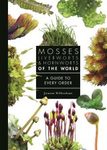Popular Science
By: Paul B Wignall(Author)
215 pages, 16 plates with colour & b/w photos and 1 colour map; 2 b/w photos, 11 b/w illustrations
![The Worst of Times The Worst of Times]()
Click to have a closer look
About this book
Contents
Customer reviews
Biography
Related titles
About this book
Two hundred and sixty million years ago, life on Earth suffered wave after wave of cataclysmic extinctions, with the worst – the end-Permian extinction – wiping out nearly every species on the planet. The Worst of Times delves into the mystery behind these extinctions and sheds light on the fateful role the primeval supercontinent, known as Pangea, may have played in causing these global catastrophes.
Drawing on the latest discoveries as well as his own firsthand experiences conducting field expeditions to remote corners of the world, Paul Wignall reveals what scientists are only now beginning to understand about the most prolonged and calamitous period of environmental crisis in Earth's history. He describes how a series of unprecedented extinction events swept across the planet in a span of eighty million years, rapidly killing marine and terrestrial life on a scale more devastating than the dinosaur extinctions that would come later. Wignall shows how these extinctions – some of which have only recently been discovered – all coincided with gigantic volcanic eruptions of basalt lavas that occurred when the world's landmasses were united into a single vast expanse.
Unraveling one of the great enigmas of ancient Earth, The Worst of Times also explains how the splitting apart of Pangea into the continents we know today ushered in a new age of vibrant and more resilient life on our planet.
Contents
Illustrations ix
Acknowledgments xi
Prologue xv
Chapter 1 A Time Of Dying 1
Chapter 2 Extinction In The Shadows 12
Chapter 3 The Killing Seas 39
Chapter 4 Troubled Times In The Triassic 89
Chapter 5 Triassic Downfall 117
Chapter 6 Pangea's Final Blow 137
Chapter 7 Pangea's Death And The Rise Of Resilience 154
Notes 177
References 179
Index 191
Customer Reviews
Biography
Paul B. Wignall is professor of palaeoenvironments at the University of Leeds. He has been investigating mass extinctions for more than twenty-five years, a scientific quest that has taken him to dozens of countries around the world. The coauthor of Mass Extinctions and Their Aftermath, he lives in Leeds.
Popular Science
By: Paul B Wignall(Author)
215 pages, 16 plates with colour & b/w photos and 1 colour map; 2 b/w photos, 11 b/w illustrations
"[Wignall] presents a sound examination of an 80-million-year span, which began nearly 260 million years ago, that is considered by scientists to have been the most extreme extinction event in the Earth's history [...] [A] great example of scientific sleuthing."
– Publishers Weekly
"[An] excellent introduction to the latest thinking about this key period in Earth's history [...] Wignall's book is enthralling."
– Matthew Cobb, New Scientist
"In this scholarly but accessible analysis, geologist Wignall explores the perfect storm of cataclysms, plate tectonics and other forces that led to 'The Great Dying' – and the rebound of life in its aftermath."
– Gemma Tarlach, Discover magazine
"Well written and persuasive."
– Choice
"Over the 170-odd pages [Wignall] discusses in great yet concise detail the point and counterpoint of large igneous provinces, massive accumulations of millions of cubic kilometers of igneous rock, and mass extinctions that occurred repetitively and in synchrony from the middle of the Permian to the middle of the Jurassic [...] A well-researched, thorough, and stimulating volume for anyone looking for a scientific account of this time period and the notable geological and biological events that took place over its course."
– William Gearty, Quarterly Review of Biology
"We often think of extraterrestrial impacts, such as the one that killed off the dinosaurs, as the primary cause of mass extinction. But in this elegantly written book, Paul Wignall cites large volcanic eruptions as the most likely cause of several earlier mass extinctions, and offers a cogent analysis of why, since the Jurassic, such eruptions have posed less of a threat to life on Earth."
– David J. Bottjer, University of Southern California
"Wignall covers everything from volcanic eruptions and the carbon cycle to climate reconstruction and the possible role the Pangea supercontinent may have played in these devastating events. This is a story well told."
– Michael J. Benton, author of The History of Life: A Very Short Introduction
"Wignall does a wonderful job of describing the mass extinctions from the Middle Permian through the Jurassic. His personal contributions to this field have been influential, and it is great fun to read about the subject through his eyes and the experiences of his research team. I really enjoyed this informative and entertaining book."
– Jonathan Payne, Stanford University
"Wignall covers everything from volcanic eruptions and the carbon cycle to climate reconstruction and the possible role the Pangea supercontinent may have played in these devastating events. This is a story well told."
– Michael J. Benton, author of The History of Life: A Very Short Introduction



































